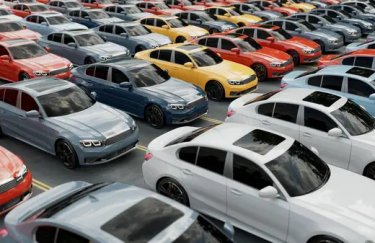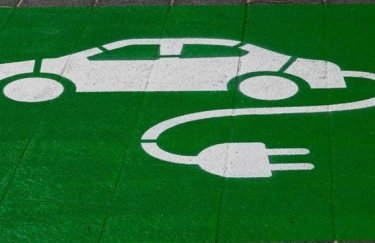
Demand for auto parts among older people has increased significantly. Photo: freepik
The Ukrainian market for automotive components is experiencing difficult times: sales volumes are dropping, buyers are economizing, and the level of competition is escalating. During the fourth year of a full-scale military conflict, market sizes have shrunk by almost a quarter, with enterprises reporting fluctuating outcomes and shifts in consumer behavior.
How firms are endeavoring to sustain their positions, and which demographic is the predominant purchaser of car parts today – discover in this piece from Delo.ua.
Demand has plummeted nearly by half since the commencement of the Great War
Suppliers of auto components indicate a considerable deterioration in the market’s condition in recent years. Demand has diminished by roughly a quarter compared to the prior year and has nearly halved when contrasted with the pre-war era.
The foremost factor is the reduction in the population and the buying potential of Ukrainians. Concurrently, logistical aspects, as per industry sources, remain consistent: the majority of goods are still routed via Poland, and there are no complications regarding deliveries from China.
“The central issue presently is not the provision of goods, but rather the decrease in client solvency and the market’s contraction,” articulate sellers.
Among the most frequently sought-after replacement parts are suspension elements, which are prone to failure due to the condition of Ukrainian roads. The typical expenditure for a set of such components varies from 1 to 2 thousand hryvnias.
Other players in the market are reticent to comment extensively on the business climate. In their estimation, matters are relatively stable – the customer base has not contracted, and the costs for essential commodities, like lubricants or filters, have experienced slight increases, presently averaging around 1.5 thousand hryvnias per set.
The client’s cost has increased, but sales have gone down.
Serhiy Palamarchuk, the Head of Retail Expansion at Eshop, observes that the landscape in 2025 is highly volatile for both consumers and representatives of the automotive sector.
“It’s not merely about seasonal variations from one month to another or week to week, as was the case previously, but about disparities occurring virtually from one day to the next. Yesterday, as an instance, sales were robust, while the day before they were notably feeble. As of today, I can discern a downturn based on the site’s activity,” elucidates Palamarchuk.
He further notes that earlier market declines could be attributed to substantial shelling incidents, but no such correlation exists presently. According to him, the market has largely become erratic.
“Based on data from search engines and monitoring of competitors, demand in 2025 has receded by about 15% relative to 2024. In parallel, fresh participants are infiltrating the market. This suggests that the cost associated with acquiring a client has notably surged, yet sales are not amplifying. From what I gather, numerous competitors are presently in a state of inertia,” conveys Serhiy Palamarchuk.
As per his statement, several contributing factors exist: the population is not growing, vehicular mileage has lessened – with numerous individuals telecommuting, there are imposed limitations on mobility due to the war. He appends that with diminished mileage, the necessity for servicing also shrinks, given that people procure fewer tires, lubricants, and replacement parts. The configuration of demand has also transformed: individuals are progressively opting for more economical products or private-label brands.
“If a filter formerly cost 300 UAH, now it is priced at 100 UAH, instantly diminishing the market size. Demand has also geographically migrated. The bulk of purchases is emanating from frontline regions – Dnipropetrovsk Oblast, Sumy, Kramatorsk. It is evident that this demand stems from military personnel who are repairing vehicles. In the central and western regions, activity is significantly subdued,” Palamarchuk remarks.
Logistical challenges have receded into insignificance
The head of retail development at Eshop explains that the war does not substantially affect logistics, given that his entity is part of a large American corporation, LKQ. According to him, since the enterprise exclusively operates within the “white” sector, importing replacement parts from Europe, they encounter no difficulties with customs or regulatory bodies.
“The scenario is dissimilar for our rivals. There are accredited importers who function akin to us. Nonetheless, there are also prominent online stores that do not engage in direct importing, instead reselling replacement parts by sourcing them from suppliers or even from the “gray” market. They face increased challenges concerning logistics and personnel, as they cannot officially enlist employees,” Serhiy Palamarchuk emphasizes.
Simultaneously, he incorporates that the market is steadily “whitening”: if in the past, half the goods were “gray,” presently it constitutes roughly 85-90% of legitimately imported parts. Palamarchuk elucidates that logistics is currently not as critical an issue as demand.
“Numerous participants in the market have forfeited their ground, as our growth is attributed not to an expansion of the market itself but to us ‘encroaching’ upon competitors’ shares. There is simply no alternative. By the culmination of 2024, we reached the 2021 level in terms of revenue. In certain instances, we even modestly surpassed it. However, I perceive no underlying factors that would promote further escalation,” Palamarchuk accentuates.
Some companies have yet to regain their 2021 profit levels
Serhiy Palamarchuk delineates that numerous enterprises did not even attain the benchmarks of 2021. This epitomizes a form of stagnation, attributable to both demographic and economic determinants. According to his assertions, one of the major marketplaces projected budgets for 2025 incorporating a deficit of 15%.
The head of the retail development segment indicates that previously, the corporation’s planning horizon spanned 2-3 years; now, it is restricted to a single year, inclusive of quarterly evaluations. In tandem, Palamarchuk manifests considerable pessimism concerning the market situation due to the deficiency of drivers for augmentation.
“Over two decades in the automotive sector, I possess a comprehensive comprehension of the market from both the B2B and B2C dimensions. Demand at a nationwide scale is nonexistent. The population has dwindled, certain territories have been subjugated, and millions have emigrated. In contrast to the pre-war baseline, the aggregate of vehicles and the demand for mileage have contracted by at least 50%,” he affirms.
An increasing number of women and elderly Ukrainians are procuring auto parts
Furthermore, Palamarchuk elaborates that since the inception of the full-scale conflict, there has been a marked surge in inquiries originating from older women. He points out that their spouses are frequently at the front or are incapacitated from servicing the vehicle, a task they traditionally executed themselves.
“Numerous calls are received from women in the 50–60 age bracket. One client candidly expressed: ‘I am solely reliant on a pension; I possess no supplementary income.’ This was an unprecedented phenomenon. Our operators maintain constant contact and equally acknowledge this pattern. Concurrently, there has been an uptick in calls from elderly men. This is manifestly a repercussion of the war and challenging living conditions,” he divulges.
According to Serhiy Palamarchuk, the quantity of submissions from women and older persons has heightened by at least a factor of three. According to his insights, they currently constitute the overwhelming majority of retail clients.
Let's remind you of the advantages and disadvantages of purchasing Chinese cars by Ukrainians.






